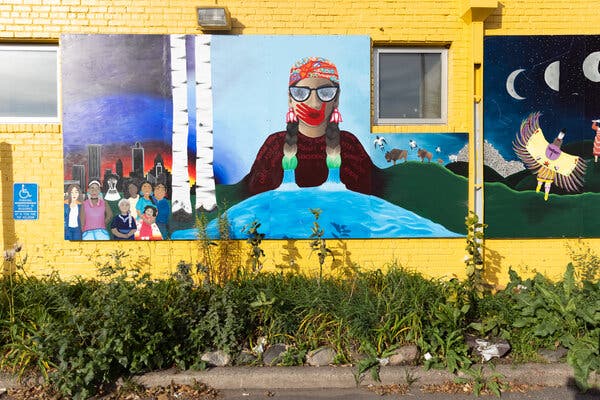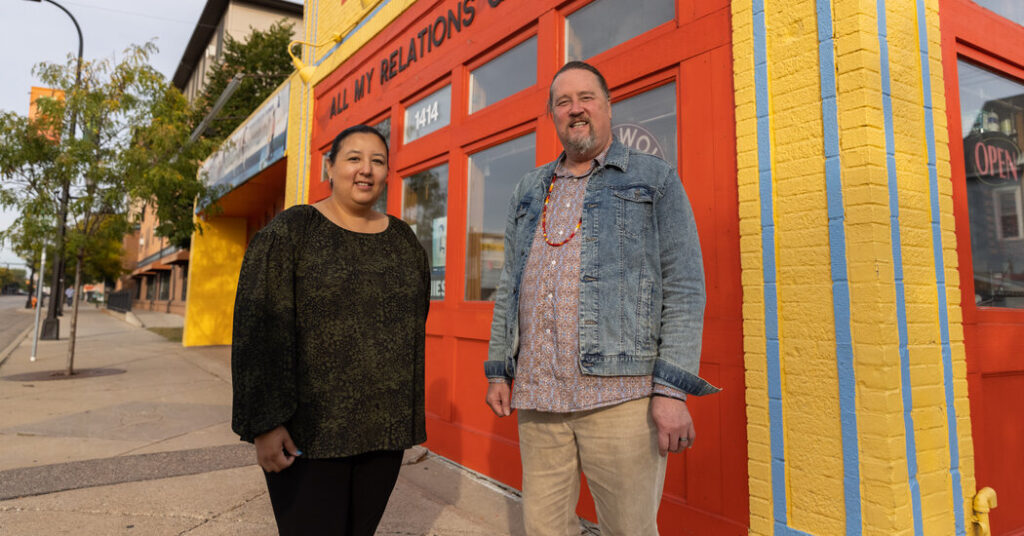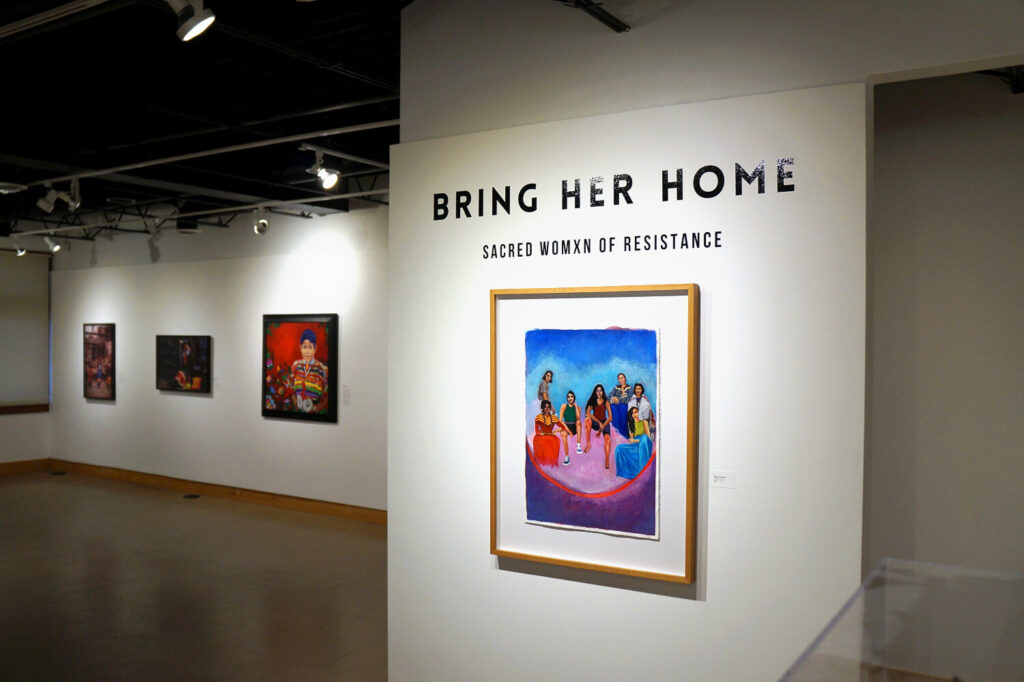
In a yellow brick building in Minneapolis, there is a mural of a woman with two braids falling into a waterfall and lips bound in a red handprint watches Franklin Avenue. Above the handprint, there is a symbol of solidarity with missing and murdered indigenous women – the figure’s sunglasses reflect the cityscape and tipis.
Reflection represents the Blueprint of the American Indian community. This is a 2010 document that provides a framework for the development of urban Indigenous communities and the American Indian Cultural Corridor along Franklin Avenue in the Phillips area south of downtown.
Robert Lilligren, president of the Native American Development Institute said that it was a revolutionary document. Its purpose was to create an economic engine for Native American art and culture.
In the center of the corridor, there is the yellow brick building that houses the institute, as well as public facilities: Four Sisters Farmers Market, Pow Wow Grounds and All My Relations Arts, an organization and exhibition gallery dedicated to increasing the visibility of contemporary Indigenous artists Peoples’ indigenous curators cultivate and link the influence of previous generations.
All My Relations Arts is celebrating 10 years at this location this year and has been in business for nearly two decades. Angela Two Stars, director of the organization said that it was a source of pride. Mr. Lilligren said the gallery immediately became the focus of attention both in the community and in the art world in general.

All My Relations is a direct result of a project that designates a corridor as a destination for Native American indigenous art, culture, and food, with examples such as Little Italy in New York and Chinatown in San Francisco.
A corridor with orange lampposts, turtle prints on the sidewalks, and many murals is set aside for an ancient merchant market and the affordable Little Earth housing estate, which became famous as the home of the American Indian Movement. Formed after the Indian Resettlement Act of 1956, the movement organized the Trail of Broken Treaties in 1972, a protest march from the West Coast to Washington, DC, demanding that the Nixon administration honor its treaty obligations.
The resettlement law forced many Native Americans to assimilate into urban areas such as Los Angeles, Chicago, and Minneapolis, home to one of the largest concentrations of urban Native Americans in the country.

Mr. Lilligren, who has been Minneapolis’s first Indian city councilor since 2001, said the American Indian movement was founded here in 1968. He was literally referring to the American Indian Cultural Corridor. He explained that the Minneapolis corridor is different from others across the country because of these organic roots and because Native Americans own most of the real estate along Franklin Avenue, including the All My Relations Arts space.
The gallery itself has become a conveyor belt for nurturing talent. One of Minneapolis’s artists, Diane White Hawk, ex-director and curator of All My Relations, has lots of works in the collection of the Smithsonian National Museum of the American Indian.
Jonathan Thunder, artist, illustrator, and filmmaker, is a mentor for All My Relationships, We’re Still Here, which supports artists in the creation of large-scale public art. All My Relations Arts initiatives go beyond the exhibition space: the lobby is adorned with murals such as “Woman in Braids” by Natchez Beaulieu and local youth in collaboration with the Minneapolis Institute of Art, as well as the exhibition “Hearts of Our People: Indigenous Women” by artists 2019 “.
The presence also extends beyond the corridor. The ongoing We Are Still Here initiative partnered with the Hennepin Theater Trust and Clear Channel Outdoor to commission Minneapolis artists to design digital billboard art throughout the metropolis.
“The indigenous people know what they want. Indigenous people have the opportunity to make their dreams come true, ”said Mr. Lilligren. “It was important for the indigenous community, indigenous art, and for the wider community.”
























